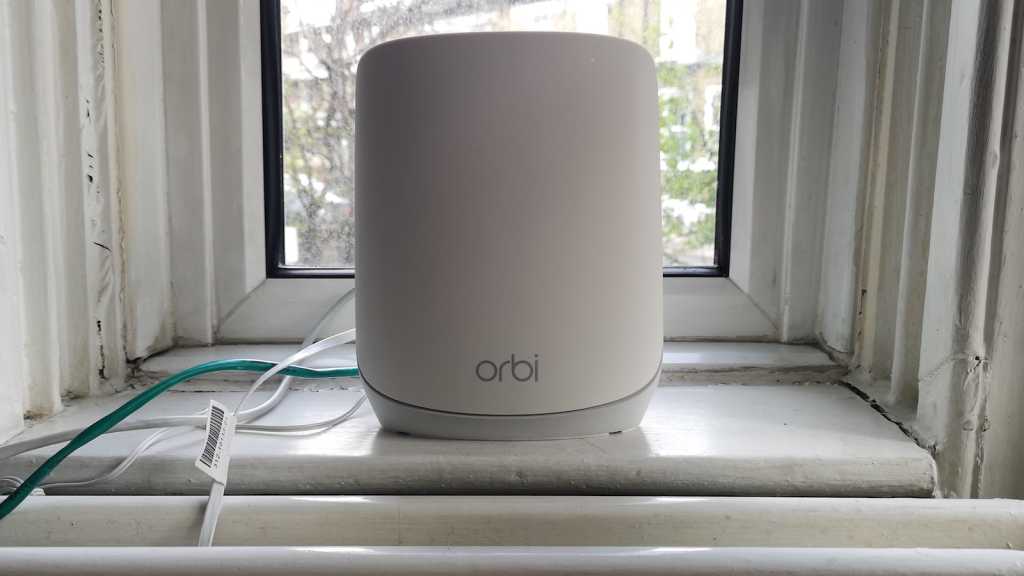Expert’s Rating
Pros
- Gigabit speeds at close ranges
- Seamless set-up process
- Ethernet backhaul supported
- Excellent overall performance
Cons
- Expensive
- Not the latest Wi-Fi standard
Our Verdict
Netgear’s Orbi RBK762S mesh Wi-Fi 6 system is easy to set up and provides excellent speeds, but cheaper alternatives are available.
The Orbi RBK762S a tri-band Wi-Fi 6 system from Netgear, promising buyers Wi-Fi speeds of over 1Gbps on the latest phones and laptops.
Each device in the Orbi 760 Series – comprising the RBR760 router and RBS760 satellites – promises coverage for up to 2,000 square feet (185.81 square metres) per device, and support for up to 75 devices simultaneously.
Ethernet ports on the router and satellites mean that desktop PCs, set-top boxes, smart TVs and games consoles can be connected with Ethernet, while everything else makes use of Wi-Fi.
Like the older Orbi RBK750 series it’s replacing, the Orbi RBK760 is a Wi-Fi 6 mesh system but – crucially – it promises faster top speeds on the 5GHz band – up to 2.4Gbps, whereas the RBK750 models’ top 5GHz speeds topped out at 1.2Gbps.
This is possible because the RBK760 range supports 160MHz-wide Wi-Fi channels. The chances are if you’ve bought a new phone or laptop in the last couple of years, it’ll also support 160MHz, but if it doesn’t, then you won’t see anything close to those top speeds.
As always, those are theoretical maximums, and real-world performance reveals itself in testing so we put the Netgear Orbi RBK762S (the two-pack kit) through its paces in a two-up, two-down terraced London house to give you an idea of what to expect in your real world.
Netgear sent a three-pack (RBK763S) for review, but because the two-pack is much more affordable and will provide enough coverage for a lot of homes, we left one of the satellites in the box for most of this review.
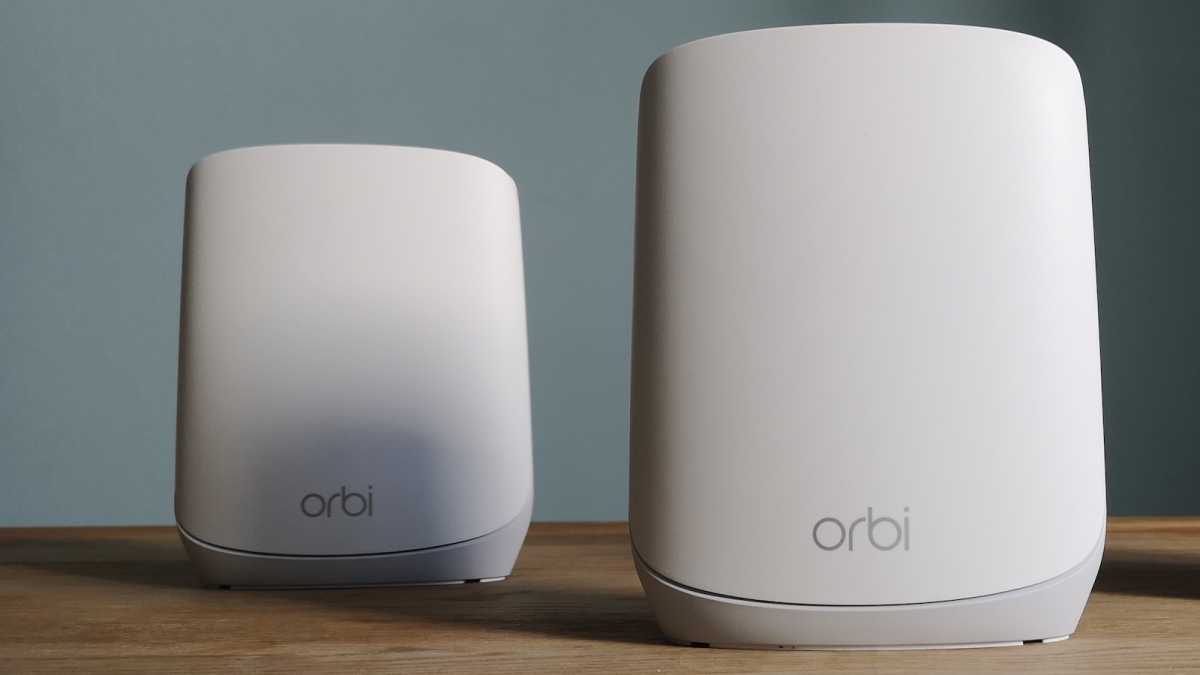
Thomas Newton / Foundry
Design & build
- Units measure 211 x 168 x 64mm
- Three Gigabit Ethernet LAN ports plus one WAN on the router
- Two Gigabit Ethernet ports on the satellites
Like all of Netgear’s Orbi hardware, the RBK762S units have an elliptical cross section fashioned from white plastic with light grey accents. They’re a bit like a cross between an air freshener and a piece of 1960’s Scandinavian furniture.
They’re sleek, unassuming, and will blend in to any modern home
The antennas are all internal, which means that the devices don’t take up much space, and weighty bases coupled with rubber feet mean they won’t be easily knocked over.
An LED strip light sits at the base of each unit and will glow different colours depending on the strength of your connection (yellow = fair, blue = better) if the router/satellite can’t connect to your modem or your internet service provider (magenta), and when it’s powering up (white). If everything’s normal, then the LED strip is dormant.
The RBR760 router has four gigabit Ethernet ports on the back: one to connect to your existing router or modem, and three for other devices. The satellites have just two LAN ports. This is par for the course and most Orbi mesh systems have the same configuration. But considering the price, you might hope for faster ports, as well as more of them on the satellites.
Other than the ports, the devices look identical. They’re sleek, unassuming, and will blend in to any modern home. You can tell why Netgear scooped up a Red Dot 2022 design gong for these.
Unless you have gigabit broadband and a bleeding-edge gaming PC with a 2.5Gbps Ethernet port, you probably won’t need need better wired speeds than the RBK762S already provides. For example, I have a 300Mbps Virgin Media service, so I would fall into this category.
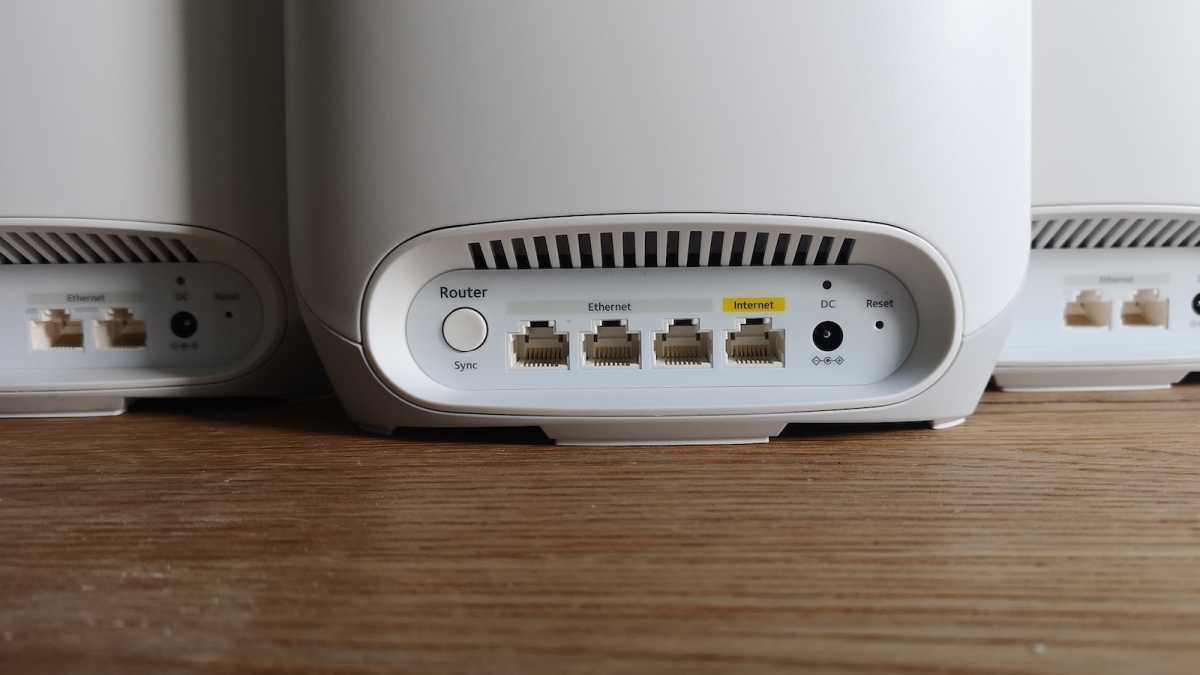
Thomas Newton / Foundry
Setup
- Netgear Orbi app makes setup simple
- No technical knowledge required
- Takes around 30 minutes
The vast majority of modern mesh Wi-Fi systems are simple to install, and the Orbi RBK762S is no exception.
The Orbi app guides you through the process with clear step-by-step instructions. You’ll first power off your modem (or router), connect the RBR760 router to it using an Ethernet cable, power it on and scan the QR code on the base of the device to authenticate the connection between your phone and the router. Alternatively, you can connect to RBR760 using the default credentials printed on the side of the device.
Once done, you can turn your modem/router back on. When a working internet connection is established, you can then connect the satellite(s) to mains power. They should pair with the router automatically, but QR codes are printed on the base if that doesn’t happen.
Then you’ll be free to give your network a new SSID/network name, Wi-Fi password, and admin password.
After that the system checked for a firmware update and found one, which took another ten minutes or so to install. It took roughly half an hour to fully complete the setup process.

Thomas Newton / Foundry
Features and the Netgear Orbi app
- Wi-Fi with dedicated wireless backhaul
- Netgear Orbi app gives quick access to home networking suite
- DNS, VPN, and port forwarding settings are accessible via the desktop control panel
The Orbi RBK762S is a tri-band system, which means that two radio frequency bands – 2.4GHz and one 5GHz – are set aside for your devices, while a second 5GHz radio is reserved for dedicated backhaul communication between the router and the satellites.
Unlike dual-band systems, which don’t have a dedicated channel for communication, the RBK762S leaves one 5GHz band entirely for your devices to talk to each other, or the internet. And that makes for a faster, more reliable system.
As mentioned, the hardware also makes use of wider 160MHz Wi-Fi channels (which are otherwise 80MHz or 40MHz on lesser mesh kits). This means newer phones and laptops will benefit from faster speeds. The RBK762S system is not, however a Wi-Fi 6E system with an extra 6GHz radio. If you need that, because you have devices which already support this standard, you’ll need to pay even more for something like the Orbi RBKE963. Or you’ll just have to accept that your devices won’t be able to use the 6GHz band.
The RBK762S supports Ethernet backhaul as well, so if your home is wired for it – or you need to place the satellite(s) further away from the router than Wi-Fi can cope with, you can route that backhaul traffic over an Ethernet connection instead.
But if you’re paying for a tri-band mesh system, you may as well benefit from that dedicated 5GHz radio channel.
The Orbi RBK762S’s features are pretty standard for mesh Wi-Fi. Along with a network layout and device management, there’s the ability to create a Guest Wi-Fi network, set up profiles for parental controls, as well as some basic analytics tools, plus the expected Wi-Fi and network settings.
Device Manager gives you an overview of your home network, which client devices are connected to which node, and which radio band they’re using. Each client’s connection can be ‘paused’, if you want to manually enforce homework time, want to isolate a device that’s hogging traffic, or you simply enjoy trolling the people in your household.
Here, you can also rename the router and satellites with names like ‘Living Room’, ‘Kitchen’ etc to make it easier to figure out what’s what.
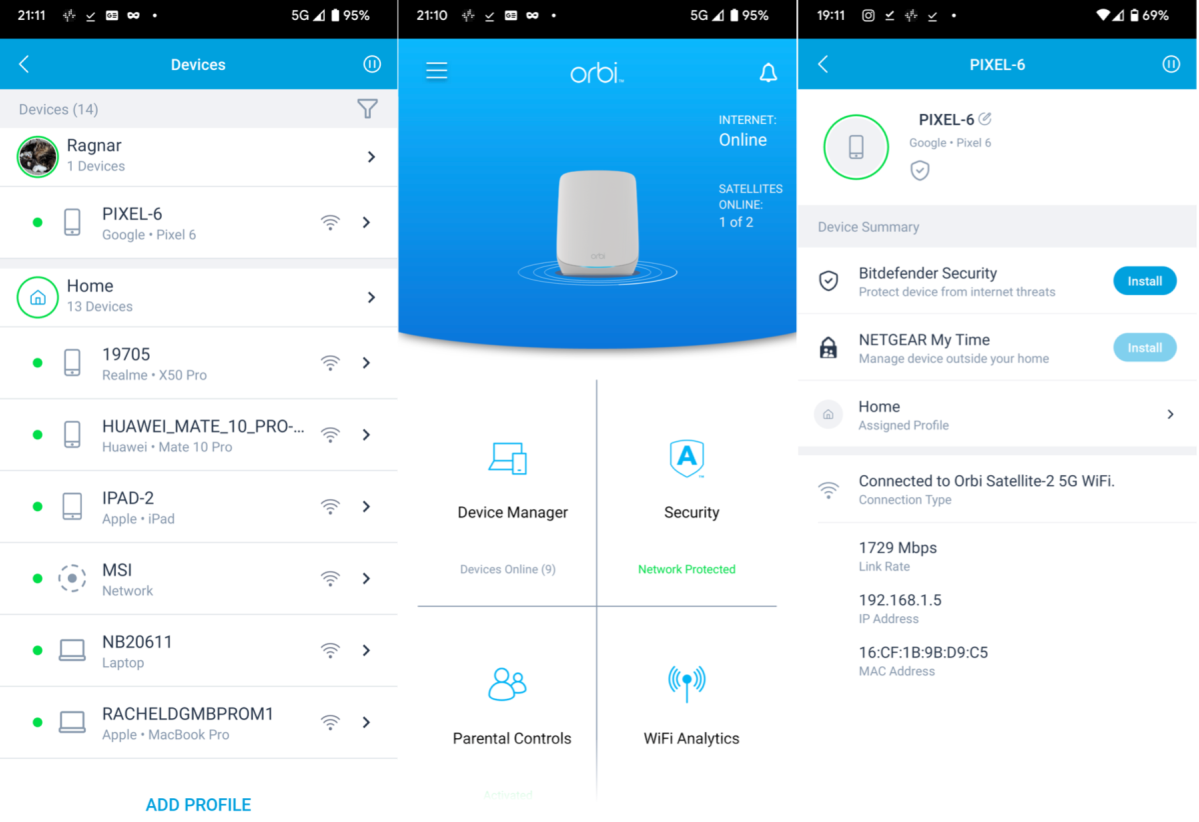
Thomas Newton / Foundry
The layout of the Orbi app is clear and intuitive. Home networking apps can be headache-inducing and labyrinthine, and the Orbi app is neither of these things. It doesn’t take long to become acquainted with the layout, and pretty soon, you’ll know where to go if you need to set up temporary Wi-Fi networks for guests, or change the SSID and password.
The Wi-Fi Analytics tool is one we don’t often see. It lets you measure signal strength, which is useful if you’re trying to find a more optimal position for things. The WiFi Settings page, as you’d expect, lets you rename the SSID and change the network password, as well as share access via a QR code, which is very convenient. You can also switch between WPA, WPA2, and WPA3 encryption standards.
However, while there is a hybrid WPA/WPA2 mode, which lets legacy devices which don’t support WPA2 encryption, there isn’t a WPA2/WPA3 mode, which isn’t great if you have a mixture of devices supporting both standards. If you enable WPA3 encryption, older devices won’t be able to connect to the Internet.
If you want to do things like tinker with port forwarding, VPN, or DNS settings, you’ll need to head to the desktop control panel at http://192.168.1.1, and enter the admin password.
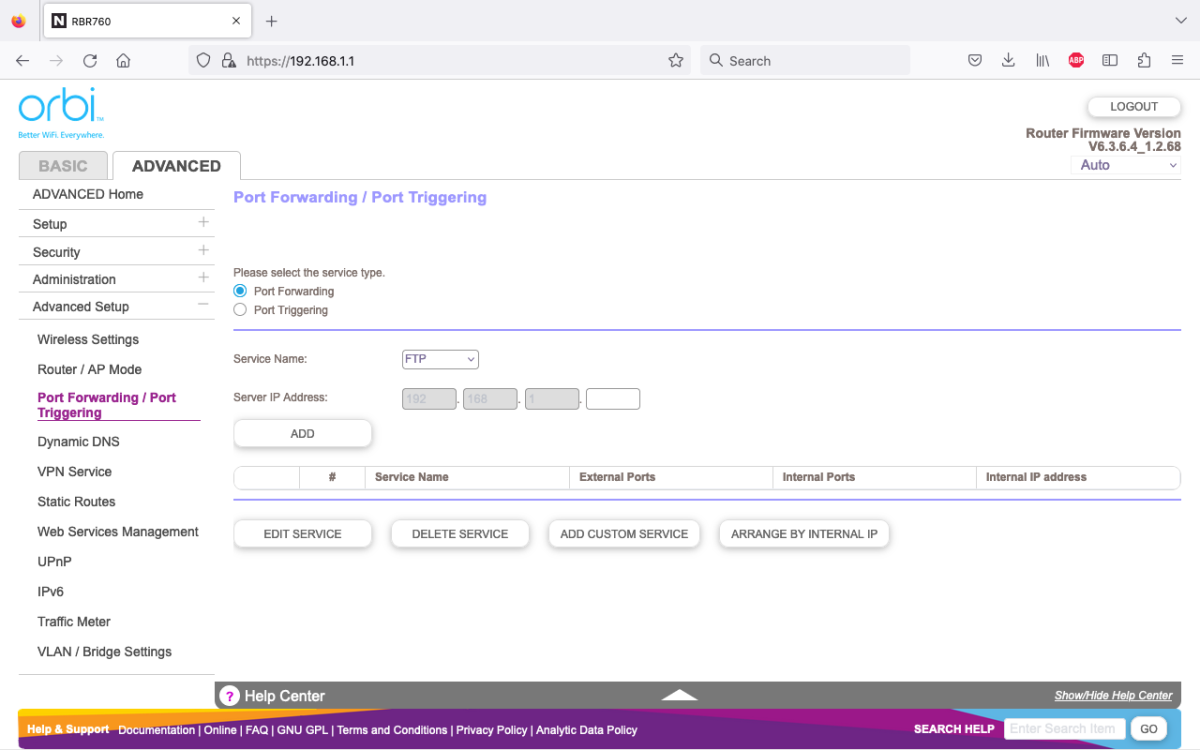
Thomas Newton / Foundry
You also get trials of extra security features. There’s a year’s subscription to the Bitdefender-powered Netgear Armor security suite (normally £84.99/ US$99.99 / AU$139.99 per year) and a month’s acess to Netgear Smart Parental Controls (normally £6.99 / US$7.99 / AU$10.99 per month or £49.99 / US$69.99 / AU$99.99 per year). You don’t have to enter any payment details and the app doesn’t nudge you towards signing up for either service, but if you want to, shortcuts are right there.
The parental controls feature is a lot better than we’ve seen on other mesh systems – which it should be at that price.
Once you’ve created profiles for family members, you then assign devices to those profiles. You can then apply homework / bedtime hours and content restrictions to those profiles including the ability to block or time-restrict access to specific apps such as TikTok and YouTube.
The benefit of doing parental control at the router level means you can apply restrictions across all the devices your child has access to. However, the downside is that they could simply turn off Wi-Fi on their phone and use mobile data to bypass any of those restrictions… until they run out of mobile data.
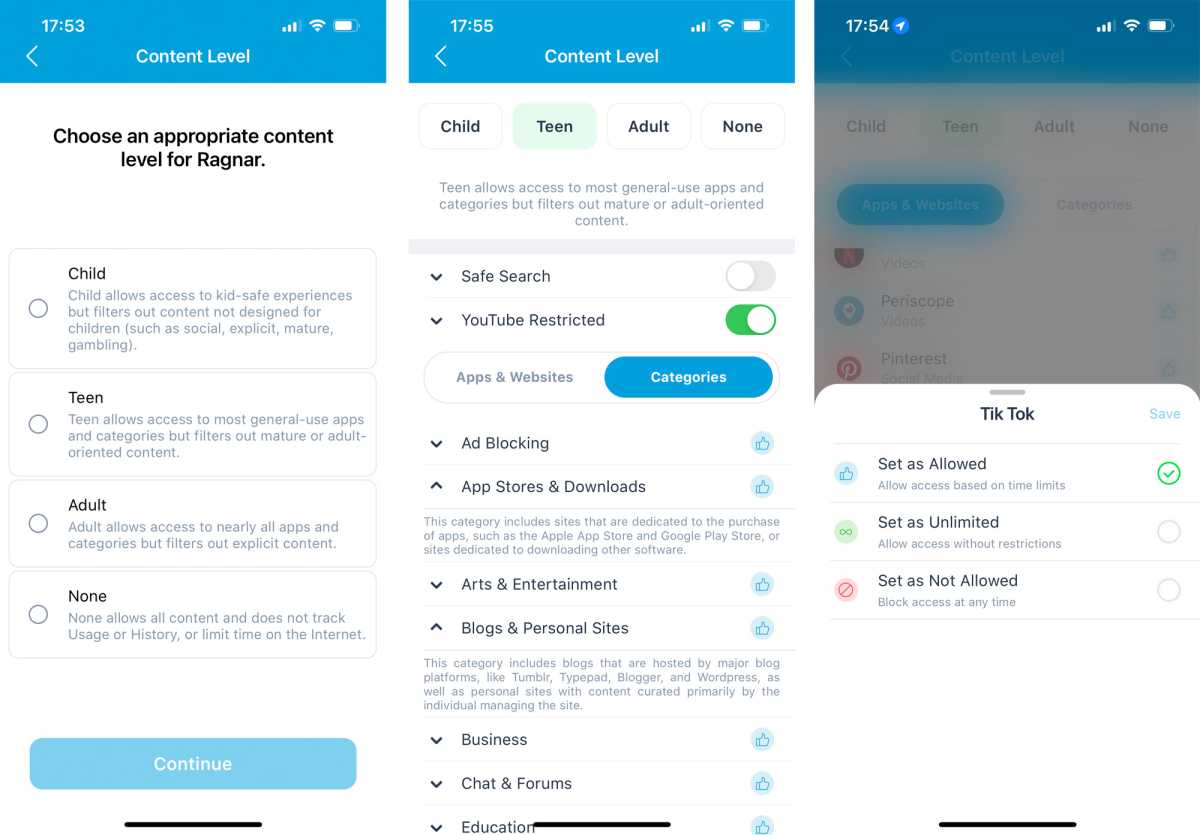
Thomas Newton / Foundry
By default, devices managed with Netgear’s parental controls will have Restricted Mode on YouTube turned on (which removes the ability to read and add comments), and you can manage a simple ‘not allowed’ blacklist of websites. Ultimately, you’d be better off looking at the best parental control software options here if your kids have smartphones.
Performance
- Speeds of 1,000Mbps+ are possible
- Expect 600-700Mbps on older phones and laptops
- Two nodes may provide enough coverage
The Orbi RBK762S delivered speeds consistent with our expectations for an AX5400 Wi-Fi 6 system. That means they are very fast at close ranges, when you’re connecting to them from newer devices that also have speedy Wi-Fi 6.
Performance is still respectable on older phones and laptops, too.
The main router was set up in the living room, connected to the modem at the front of the house. The satellite was installed in the office upstairs at the back of the house, roughly 12 metres away, one floor up.
The Netgear Orbi RBK760 is a great mesh Wi-Fi system
I ran a number of speed tests at various locations throughout the home using the WiFi Speed Test Pro app on three different Android phones – a Huawei Mate 10 Pro, a RealMe X50, and a Google Pixel 6. These tests were carried out standing one metre away from the router, then five metres away, behind a non-load bearing wall. The third test took place in the office – and the fourth test took place out in the garden, up to 20 metres away from the router.
So you can see how adding a second satellite changes the results, I plugged it in in the kitchen, almost directly below the office, and about the same distance away from the router.
The results are averages, rounded up to the nearest megabit per second, and you can see how they compare to Virgin’s Media Super Hub 3 which uses Wi-Fi 5.
| Huawei Mate 10 Pro (Wi-Fi 5) | Virgin Media Super Hub 3 | Netgear Orbi RBK760 (two nodes) | Netgear Orbi RBK760 (three nodes) |
| 1m | 494Mbps | 570Mbps | 563Mbps |
| 5m with a wall | 403Mbps | 318Mbps | 303Mbps |
| Upstairs, near the rear of the house | 14Mbps | 865Mbps | 433Mbps |
| Garden | No connection | 114Mbps | 187Mbps |
| Realme X50 Pro (Wi-Fi 6) | Virgin Media Super Hub 3 | Netgear Orbi RBK760 (two nodes) | Netgear Orbi RBK760 (three nodes) |
| 1m | 527Mbps | 687Mbps | 625Mbps |
| 5m with a wall | 317Mbps | 373Mbps | 260Mbps |
| Upstairs, near the rear of the house | 23Mbps | 857Mbps | 744Mbps |
| Garden | No connection | 122Mbps | 205Mbps |
| Google Pixel 6 (Wi-Fi 6 / 6E) | Virgin Media Super Hub 3 | Netgear Orbi RBK760 (two nodes) | Netgear Orbi RBK760 (three nodes) |
|---|---|---|---|
| 1m | 535Mbps | 909Mbps | 852Mbps |
| 5m with a wall | 346Mbps | 431Mbps | 615Mbps |
| Upstairs, near the rear of the house | 5Mbps | 1160Mbps | 982Mbps |
| Garden | No connection | 263Mbps | 266Mbps |
As you can see, the extra node didn’t make a huge amount of…
